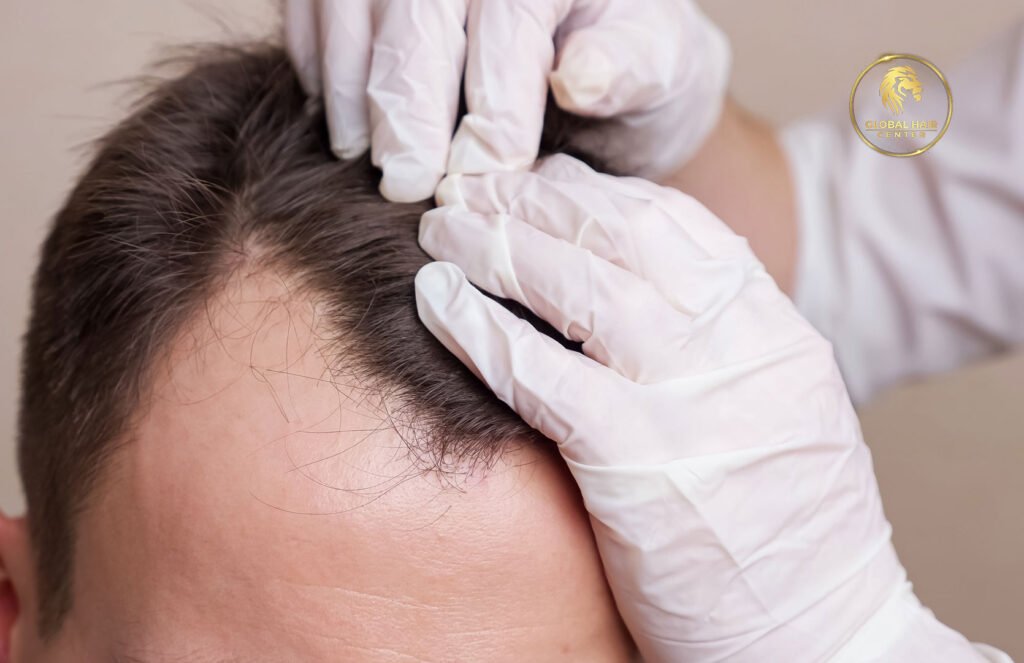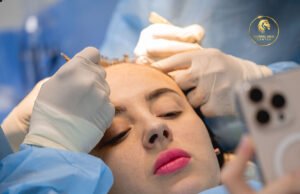Factors Affecting FUE Hair Transplant Results

Factors Affecting FUE Hair Transplant Results
Hair loss can be a distressing experience for many individuals, impacting self-confidence and quality of life. Fortunately, advancements in medical technology have led to innovative solutions like Follicular Unit Extraction (FUE) hair transplant surgery.
This comprehensive guide aims to help you thoroughly understand FUE, from its procedure and benefits to recovery and beyond.
Understanding FUE Hair Transplant Surgery
FUE stands for Follicular Unit Extraction, a minimally invasive surgical technique used to transplant individual hair follicles from one part of the body (the donor site) to another (the recipient site).
Unlike traditional strip harvesting methods, FUE involves extracting follicular units directly from the scalp, resulting in less scarring and a quicker recovery time.
Ideal candidates for FUE hair transplant surgery include:
Individuals experiencing male or female pattern baldness.
Those with sufficient donor hair on the scalp or other parts of the body.
Patients in good overall health with realistic expectations about the outcomes of the procedure.
How Does FUE Work?
Consultation and Planning: The journey begins with a consultation with a qualified hair transplant surgeon. During this session, the surgeon evaluates the extent of hair loss, discusses expectations, and determines candidacy for FUE.
Preparation: On the day of the procedure, the patient’s hair is trimmed short to facilitate easier access to the donor and recipient areas. Local anesthesia is administered to ensure comfort throughout the surgery.
Extraction of Hair Follicles: Using a specialized punch tool (typically ranging from 0.6 mm to 1.0 mm in diameter), the surgeon carefully extracts individual follicular units from the donor area. These units may contain one to four hairs each.
Creation of Recipient Sites: Once the follicular units are harvested, the surgeon creates tiny incisions or recipient sites in the bald or thinning area where the hair will be transplanted. The angle, depth, and density of these recipient sites are critical for achieving natural-looking results.
Transplantation of Hair Follicles: Each extracted follicular unit is meticulously implanted into the recipient sites using forceps or an implantation device. This step requires precision to ensure proper alignment with existing hair growth and overall aesthetic harmony.
Post-Procedure Care: After the surgery is complete, the patient receives instructions on how to care for the transplanted area. This may include gentle washing techniques, avoiding strenuous activities, and taking prescribed medications to aid healing and minimize discomfort.
Recovery and Results
Patients may experience mild swelling and redness in the donor and recipient areas immediately post-surgery, which typically subside within a few days. Some discomfort and numbness may also be present initially.
Within the first few weeks after surgery, the transplanted hair sheds as part of the natural hair growth cycle. This is normal and should not be a cause for concern.
Around three to six months after surgery, new hair growth begins to emerge from the transplanted follicles. Initially, the hair may appear thin and sparse, but it gradually thickens over time.
It may take up to 12 to 18 months post-surgery to see the full results of FUE hair transplant surgery. Patients can expect improved hair density and a more youthful hairline that enhances their overall appearance.
Long-Term Maintenance and Follow-Up
Patients may be prescribed medications such as finasteride or minoxidil to maintain existing hair and prevent further loss. Nutritional supplements rich in vitamins and minerals can also support hair health.
Regular follow-up appointments allow the surgeon to monitor progress, assess new hair growth, and address any concerns. Adjustments or additional procedures such as PRP may be recommended based on individual response to treatment.
Psychological Impact and Patient Satisfaction
Restoring a natural hairline and increasing hair density can significantly improve self-esteem and confidence. Patients often report feeling more youthful and attractive after successful FUE hair transplant surgery.
Managing expectations is also crucial; while FUE can achieve substantial improvements, individual results may vary based on factors like hair quality and extent of baldness.
Choosing a Qualified FUE Hair Transplant Surgeon
Selecting a skilled and experienced hair transplant surgeon is crucial for achieving successful outcomes with FUE. Consider the following when choosing a surgeon:
Credentials: Ensure the surgeon is board-certified and has specific training in hair restoration techniques.
Portfolio and Testimonials: Review before-and-after photos and patient testimonials to gauge the surgeon’s skill and patient satisfaction.
Consultation: Schedule a consultation to discuss your goals, the procedure itself, and any concerns you may have. A reputable surgeon will provide personalized recommendations based on your unique needs.
Cost Considerations
The cost of FUE hair transplant surgery can vary based on several factors, including the extent of hair loss, the number of grafts needed, the surgeon’s expertise, and the geographic location of the clinic. Patients should ask about the initial procedure and consider potential additional sessions for optimal results.
Factors Affecting FUE Hair Transplant Results
Hair Characteristics
The texture, color, and curliness of hair can influence how well it blends with existing hair.
Surgeons consider these factors during transplantation to achieve a natural appearance.
Scalp Elasticity
The flexibility of the scalp affects how donor follicles can be harvested and transplanted.
Surgeons assess scalp elasticity to determine the feasibility of extracting enough grafts without causing excessive tension or discomfort.
Age and Hair Loss Progression
Younger patients in the early stages of hair loss may require ongoing treatments as hair loss progresses over time.
Older patients may have stabilized hair loss, making them ideal candidates for a single FUE procedure.
Cost-Benefit Analysis of FUE Hair Transplant Surgery
While FUE may involve a significant initial cost, the long-term benefits of restored hair and improved confidence can outweigh the financial investment. Consider the value of permanent results versus ongoing expenses for temporary solutions like hairpieces or medications.
Many clinics offer financing plans or payment options to help patients manage the cost of FUE hair transplant surgery. Exploring these options can make treatment more accessible for individuals considering hair restoration.
Advances in FUE Technology
Automated systems like robotic FUE assist surgeons in precise follicle extraction and transplantation. These systems enhance accuracy and reduce procedural time, contributing to improved patient outcomes.
Platelet-rich plasma (PRP) Therapy involves injecting a patient’s platelet-rich plasma into the scalp to stimulate hair growth and enhance healing after FUE. It’s often used as a complementary treatment to optimize results and promote faster recovery.
Conclusion
FUE hair transplant surgery offers a transformative solution for individuals struggling with hair loss, providing natural-looking results with minimal downtime. By understanding the procedure, benefits, recovery process, and considerations involved, patients can make informed decisions about pursuing FUE to restore their hair and confidence.
Consultation with a qualified hair transplant specialist is the first step toward achieving a fuller, more youthful-looking head of hair through FUE. Contact Us today and book your FREE Consultation session.

How Dubai Became a Global Hub.
How Dubai Became a Global Hub for Hair Transplants Thanks to its state-of-the-art facilities, world-class surgeons, and rising interest in.
Read More
Affordable Hair Transplant Cost for Men.
Affordable Hair Transplant Cost for Men in Dubai – Global Hair Dubai Dubai has emerged as a global hub for.
Read More
